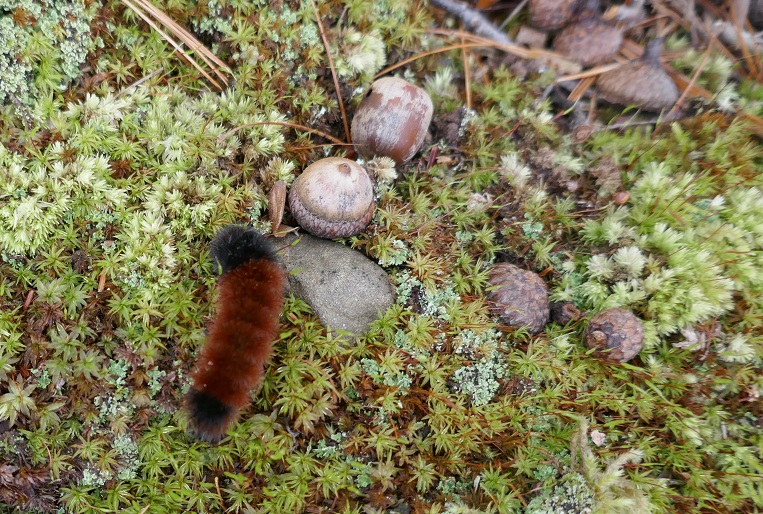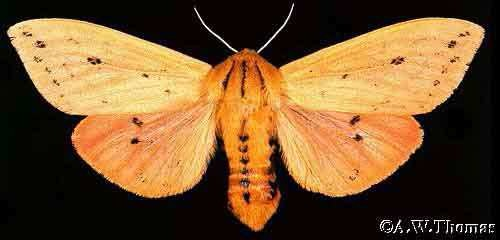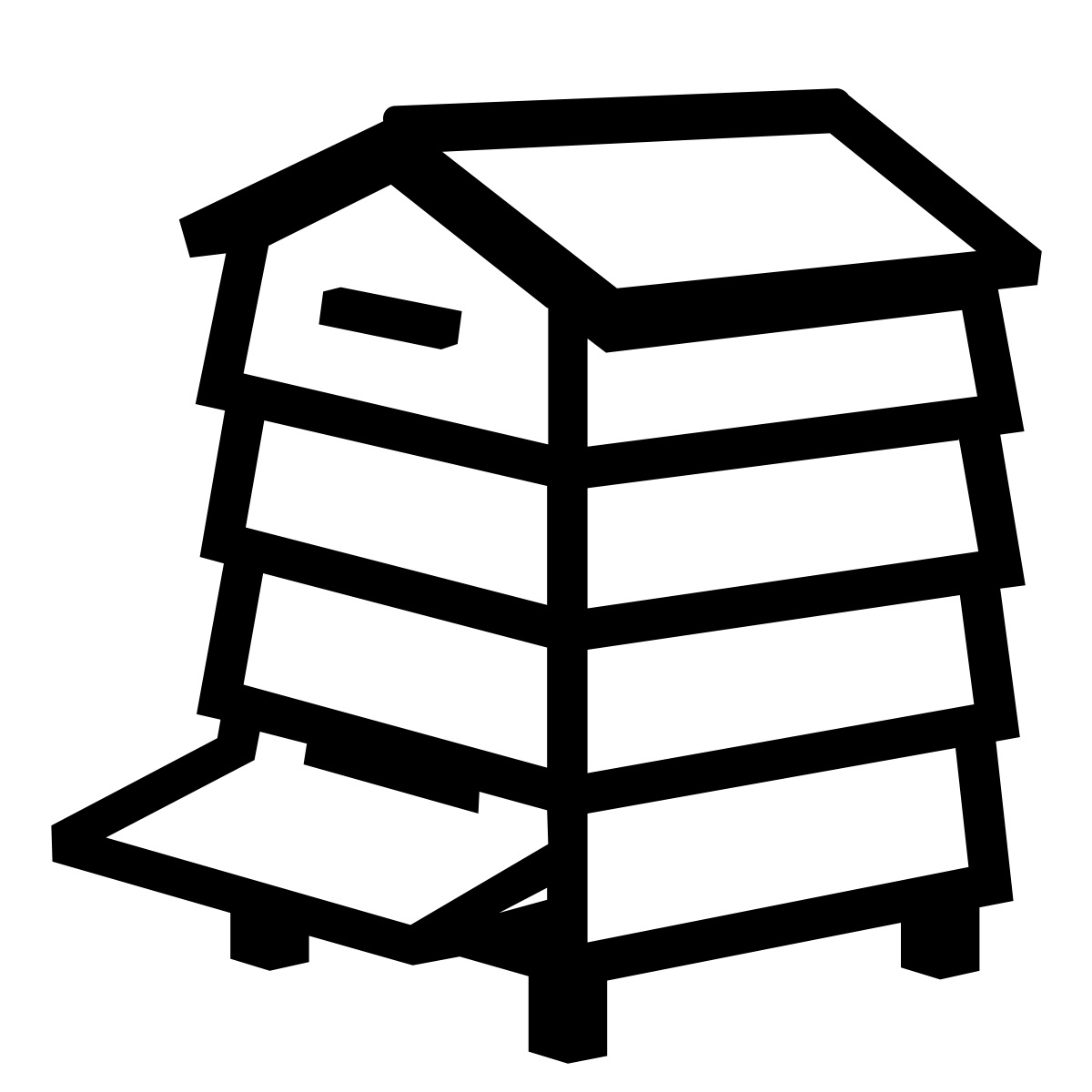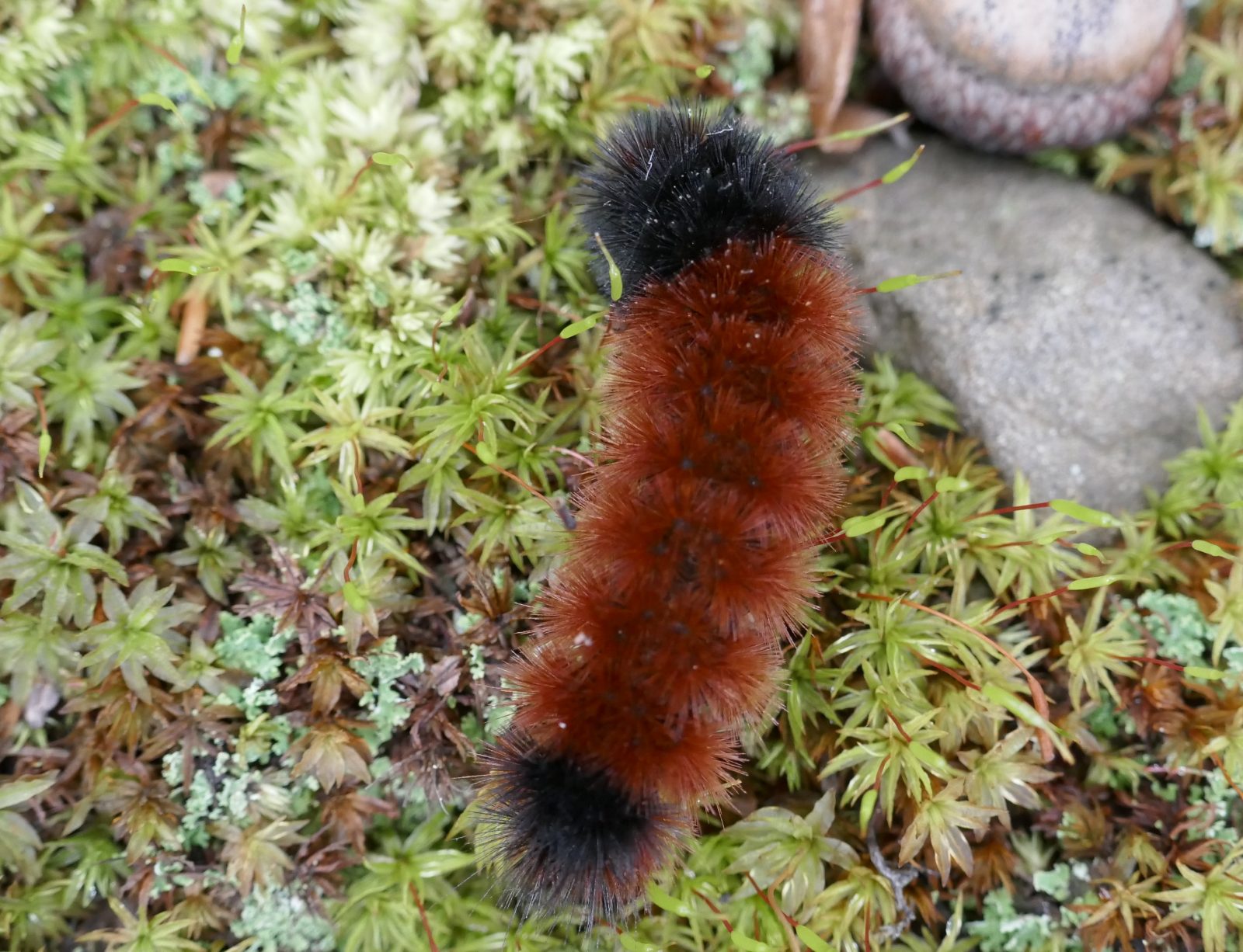
Walking through farmlands in the Hudson Valley of New York, I come across this intriguing insect looking not unlike a bottle brush. My host tells me that folklore predicts a mild winter if the red band is wide, but a severe one if narrow. Hopefully this is true!


Life Cycle.

This beautiful orange/yellow moth will appear in late spring and be active on summer nights. It has a wingspan of 1.5-2″. But, meanwhile, some of the caterpillars must survive ferociously cold winters. The banded woolly bear larva, found in the USA, Canada and Mexico, hatches from an egg in autumn. Being a generalist feeder, it fills up on plants, herbs and trees then hibernates in some earthy nook or cranny, and under leaves.
Defensive Strategies.
If disturbed, this animal will curl up in a bristly ball making it difficult to be eaten by a bird. The colour scheme of red against black may also frighten some prey. In order to survive arctic conditions, the caterpillar freezes solid in a situation where firstly the heart stops. Next the gut freezes, then the blood followed by the rest of the body. It becomes solid but protected from death and damage by a special chemical like an anti-freeze which allows the caterpillar to thaw out in spring, and later undergo metamorphosis into adult moth-hood.

